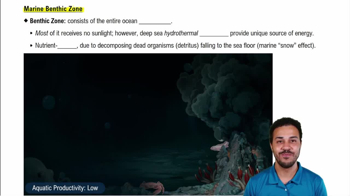Propose an evolutionary hypothesis to explain the observation that some bird populations do not migrate if people supply food for them in feeders.

<Image>
Mass strandings of whales occur on beaches near military exercises where sonar is used, raising concerns about the effects of human-generated underwater sounds on animal behavior. Scientists are collecting behavioral data on several species of whales to find out how sonar affects them.
Whales communicate with one another using sound. What is one benefit and one cost to whales of using sound to communicate underwater?
 Verified step by step guidance
Verified step by step guidance
Verified video answer for a similar problem:
Key Concepts
Whale Communication

Effects of Sonar on Marine Life

Acoustic Pollution

Hamilton's rule states that an altruistic allele could spread in a population if Br > C, where B represents the fitness benefit to the recipient, r is the coefficient of relatedness between altruist and recipient, and C represents the fitness cost to the altruist. If r = 0.5 between the altruist and the recipient, what would the ratio of costs to benefits have to be for the altruistic allele to spread?
a. C/ B > 0.5
b. C/ B > 0
c. C/ B < 0.5
d. C/ B < 0
Evolutionary biologist Hopi Hoekstra and colleagues have hypothesized that the burrow-digging behavior of mice (and the resulting shape of their underground burrows) is heritable—innate and not learned. Design an experiment to test this hypothesis.
<Image>
Mass strandings of whales occur on beaches near military exercises where sonar is used, raising concerns about the effects of human-generated underwater sounds on animal behavior. Scientists are collecting behavioral data on several species of whales to find out how sonar affects them.
Researchers followed tagged blue whales to observe how they respond to simulated military sonar—using sound levels much lower than those typically used during military exercises. Analyze the sample of data below for one individual blue whale and summarize the behavioral effect of the sound exposure.
<Image>
Mass strandings of whales occur on beaches near military exercises where sonar is used, raising concerns about the effects of human-generated underwater sounds on animal behavior. Scientists are collecting behavioral data on several species of whales to find out how sonar affects them.
Using the graph, estimate the number of minutes of foraging per hour before and after the sound exposure. Then predict the effect of sonar on the fitness of blue whales. Explain your reasoning.
<Image>
Mass strandings of whales occur on beaches near military exercises where sonar is used, raising concerns about the effects of human-generated underwater sounds on animal behavior. Scientists are collecting behavioral data on several species of whales to find out how sonar affects them.
Predict why the whale foraged at a depth of 100–170 m.
a. The whale learned to forage at this depth from its mother.
b. The whale had an innate instinct to feed at this depth.
c. The whale's food was most plentiful at this depth.
d. The whale could not dive any deeper than this depth.
